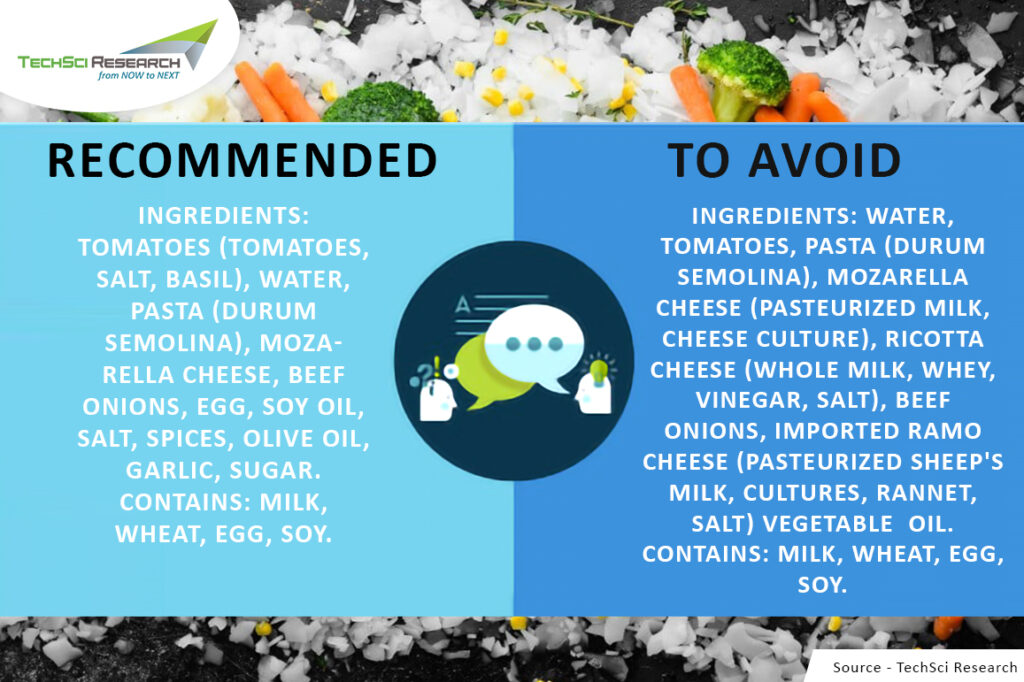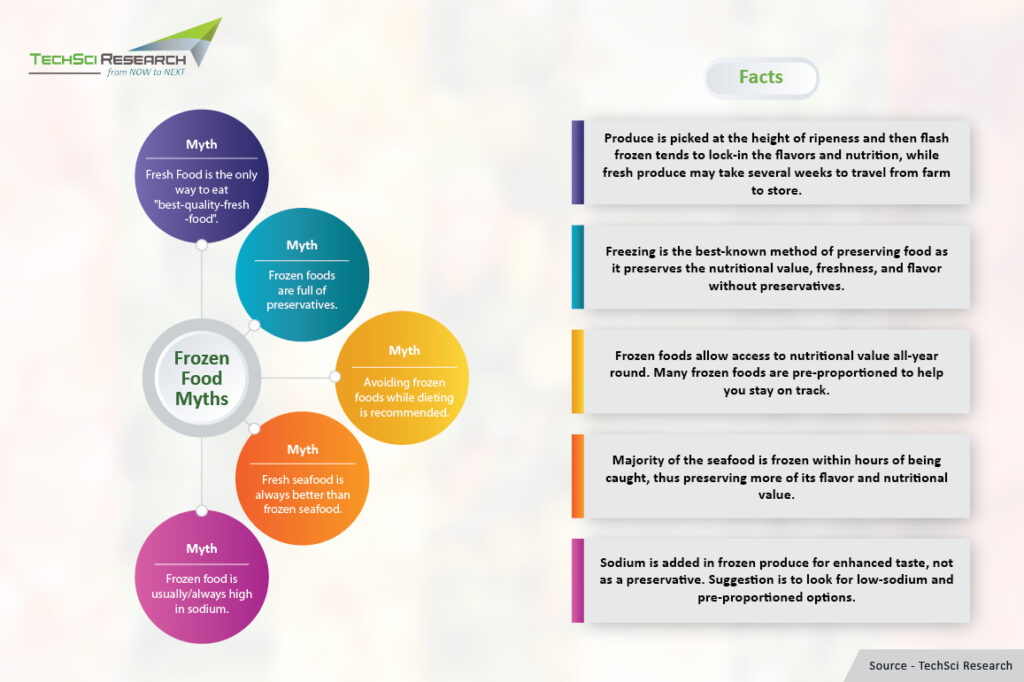The Frozen Food Revolution: Balancing Health and Convenience
The frozen food landscape has evolved significantly, discarding its previous reputation for being synonymous with unhealthy choices. Today, the frozen food category boasts an impressive array of nutritious options that can be a valuable addition to our dietary regimen. Frozen foods have been a staple in many households for decades. They are convenient, affordable, and can be stored for long periods of time. Though there has been a misconception that frozen foods are not as healthy as fresh foods, this is not necessarily true. In fact, frozen foods can be just as nutritious as fresh foods, and sometimes even more.
For example, nowadays, frozen veggies and fruits are considered a great option because they are flash-frozen to lock in their nutrients. Frozen protein sources like fish, chicken, and lean beef can also be part of a balanced diet. They are often minimally processed and provide a convenient way to incorporate lean protein into your meals. However, it is always suggested to check the ingredient list for added sauces or seasonings high in sodium or unhealthy fats.

According to TechSci Research Report “Frozen Food Market – Global Industry Size, Share, Trends, Opportunity and Forecast, 2028” Segmented By Product (Frozen Fruits, Frozen Vegetables, Dairy Products, Frozen Soup, Frozen Meat & Seafood, Frozen Convenience Food & Ready Meals, Others), By Type (Raw Material, Half Cooked, Ready-to-eat), By End User (Food Service Industry, Retail Customers), By Distribution Channel (Offline, Online), By Region, Competition” The global frozen food market is expected to undergo robust CAGR during the forecast period owing to the growing demand for frozen food which needs least preparation and cooking time. Most of these frozen foods have higher shelf-life which serves as another factor for the growth of this market. Moreover, the hectic and busy life of consumers across the globe has changed their dietary preferences. This has led to surge in demand for frozen food and in the coming years it will act as a major growth factor for frozen food industry.
Role of Technology In Elevating Frozen Food Market in 2023
Technology is playing a pivotal role in revolutionizing the healthy frozen food sector in several ways. Firstly, advancements in freezing and packaging technologies have greatly improved the preservation of nutrients and the overall quality of frozen food. Flash freezing and vacuum sealing techniques ensure that fruits and vegetables maintain their nutritional value and taste, making them a more appealing and nutritious option for consumers.
Technology has optimized each phase of the modern frozen foods’ journey into the current market. For instance, technologies like advanced refrigeration, sensors, and monitoring devices, etc., ensure precise monitoring of the of the entire cold chain and effective preservation of freshness, taste, and nutritional value. Furthermore, digital platforms and mobile apps have made it easier for consumers to access information about the nutritional content of frozen foods. Scanning barcodes or using apps to track calorie counts and ingredient lists empowers individuals to make informed choices, contributing to a healthier diet.
In summary, technology has revolutionized the transportation of frozen foods by ensuring precise temperature control, improving route efficiency, enhancing communication and visibility, and providing valuable data insights. These advancements have not only increased the reliability and safety of frozen food delivery but have also expanded the market for frozen products, allowing consumers to enjoy a wider range of high-quality options.
Reducing Food Waste Through Frozen Foods: An Observation
The adoption of frozen food can have a significant impact on reducing food wastage due to several interconnected factors. One of the primary advantages of frozen food is its extended shelf life. Preservation at low temperatures slows down the growth of spoilage-causing bacteria and enzymes, allowing consumers to keep food for longer periods. This, in turn, decreases the likelihood of food items going bad and being discarded prematurely. However, it is not the front face of the entire phenomena. Most of the benefits are indirectly related. Let us know more on the same:
- The narrative can be initiated by considering a simple example of fresh berries versus frozen berries. While fresh berries may last only a few days in the refrigerator before becoming mushy and moldy, frozen berries can retain their texture, flavor, and nutritional value for months. This disparity in shelf life allows consumers to purchase and consume food at a more leisurely pace, reducing the chances of fresh items going to waste.
- The practice of freezing leftovers is a highly practical and effective way to minimize food wastage in households. It addresses the specific concern where individuals prepare more food than they can consume in a single meal, resulting in leftover portions. To the benefit, Freezing leftovers not only preserves the food’s freshness but also extends its lifespan significantly. This approach eliminates the pressure to consume all the leftovers within a short timeframe and reduces the likelihood of throwing away spoiled food.
- Sometimes, buying food items in bulk quantities can be cost-effective, but it may also be a significant reason of food wastage if it can’t be consumed quickly enough. Consider purchasing items like meat, seafood, or bread in larger quantities and freezing them in smaller portions. By doing so, not only good money is saved but food spoilage is also prevented.
Culinary Creativity with Frozen Foods
The realm of culinary creativity opens wide to embrace the frozen food path, where multiple exciting opportunities awaits. Frozen ingredients, often overshadowed in comparison to fresh produce, meats, and seafood, emerge as a stable option for crafting delightful dishes.
One of the primary benefits of incorporating frozen ingredients into your culinary ideas lies in their extraordinary diversity. Within the frozen food section, an extensive array of choices, spanning from fruits and vegetables to proteins and aromatic herbs, can be found. These ingredients are frozen at the peak of their freshness, ensuring the preservation of their rich flavors, textures, and nutritional value. For instance, frozen fruits, such as berries, mangoes, and bananas, are a staple in the world of smoothie enthusiasts. They bring a burst of natural sweetness, vibrant colors, and a refreshing chill to your morning routine. Blending a handful of frozen fruits with yogurt or specific choice of milk creates a luscious and nutritious breakfast or snack option. Topped with granola, nuts, or seeds, these smoothie bowls become works of art that are as delightful to the eyes as they are to the palate.
Strategies To Level Up Your Culinary Success
- Proper Storage: It is suggested to store frozen ingredients in a well-organized freezer. Also, label items with dates to keep track of freshness.
- Texture Maintenance: It is important to note that freezing can alter the texture of some ingredients, such as leafy greens. While they may not be ideal for salads, they are excellent for cooking and blending.
- Thawing Techniques: The best way is to learn the recommended methods for thawing frozen ingredients. Some can be added directly to dishes, while others benefit from gradual thawing in the refrigerator.
- Balancing Flavors: Adjust seasoning to accommodate the potential variation in flavor that freezing can cause. Taste as you go to achieve the desired balance.
- Quality Matters: Choose high-quality frozen ingredients from reputable brands to ensure the best flavor and nutritional value.
Therefore, From nutritious breakfast smoothies to globally inspired dinners and delightful desserts, frozen foods offer convenience, versatility, and the opportunity to create culinary masterpieces in your own kitchen.
Selecting Healthy Frozen Foods: Consumer Guidelines
For a consumer to be an informed buyer of the same, the journey of selecting frozen foods begins with a careful examination of the ingredient list found on the packaging. It is paramount to prioritize products with minimal, recognizable ingredients. Such choices often indicate a lower presence of additives, preservatives, or unfamiliar chemicals, aligning with preferences for wholesome and minimally processed options.
- Look Out For Sodium Content
Frozen foods often involve salt as a preservative and flavor enhancer. To maintain control over sodium intake, it is suggested to attentively monitor sodium levels. One should deliberately seek out low-sodium or no-salt-added alternatives, fostering healthier dietary practices.
- Choosing Whole Ingredients
In the category of frozen fruits and vegetables, preference should be given to whole options devoid of added sauces, seasonings, or sugars. Such choices provide a pristine and versatile foundation for culinary creations, offering greater flexibility in incorporating them into recipes of specific choices.
- Look For Protein Content
For those confused about frozen meats or plant-based protein alternatives, a dedicated approach involves assessing the quality and source of the protein. It is advised to opt for lean cuts of meat or plant-based proteins that undergo minimal processing, thereby preserving the integrity of the protein source.
- No to GMOs
For people concerned about the presence of Genetically Modified Organisms (GMOs) in their food, it is advised to seek out frozen food items bearing labels such as non-GMO or those verified by reputable third-party organizations like the Non-GMO Project.
- Sustainability-Centric Packaging
A growing number of brands are demonstrating commitment to sustainability by incorporating eco-friendly packaging for their frozen products. Discerning consumers can contribute to environmental conservation by selecting products that prioritize sustainability in their packaging choices.
- Look Out For Reputed Brands
The significance of sourcing frozen foods from reputable and trusted brands cannot be overstated. Well established brands with a history of consistently delivering high-quality products, offer consumers a degree of reliability and assurance. Claims such as “healthy” or “natural” may require verification through careful examination of ingredient lists and nutrition labels. Renowned brands ensure that their healthy ingredients and additions are well verified on their packaging label.

By applying these comprehensive consumer tips, shoppers can confidently navigate through the vast array of frozen food options, thereby ensuring that their selections meet their dietary, nutritional, and quality requirements. This diligent approach empowers consumers to make choices that resonate with their preferences and values while upholding the principles of healthy and conscientious consumption.
According to TechSci Research Report “India Ready-To-Eat Food Market By Product Type (Ready-To-Heat and Ready-To-Cook) By Type of Sale (Retail Sales, and Institutional Sales), By Distribution Channel (Convenience Stores, Traditional Sales, Departmental Stores, Wholesaler, Online, Others (Distributor Sales, Direct Sales, etc.)), By End User (Residential, Food Service, and Distributor), By Region, By Company, Forecast & Opportunities, 2018-2028F,” The India Ready-To-Eat Food Market size is anticipated to register an impressive CAGR during the forecast period. The increased inclination for convenience food items among the working population, the expansion of the Indian retail chain sector, and new product introductions are some of the main growth factors for the ready-to-eat food market. However, obstacles such as growing obesity and diabetes-related health concerns could impede market expansion. Consumers who care about their health do not favor ready-to-eat foods because of their high-fat content.
Conclusion
In conclusion, the adoption of healthy frozen foods by consumers represents a significant and positive shift in the way it is approached nutrition, convenience, and sustainability-wise in our daily lives. The frozen food aisle, once associated primarily with convenience over health, has undergone a remarkable transformation, offering a wealth of nutritious options that align with the evolving preferences and lifestyles of modern consumers.
However, relevant concerns and considerations should be considered before having one. As consumers, it’s crucial to remain discerning in our choices within the frozen food aisle. Reading labels, scrutinizing ingredient lists, and prioritizing whole, minimally processed options are essential practices. By doing so, we can ensure that the convenience and versatility of frozen foods do not come at the expense of our health and well-being.
In embracing healthy frozen foods, consumers are not only taking steps toward improving their own nutrition but are also contributing to a more sustainable and responsible food ecosystem. This shift represents a positive change, not only in our diets but also in our approach to food consumption. It’s a journey toward a healthier, more convenient, and environmentally conscious way of eating—one that continues to evolve as the frozen food industry responds to the changing needs and expectations of consumers. So, as we stand in front of the frozen food aisle, let us choose wisely, recognizing that with each selection, we are shaping a healthier and more sustainable future for ourselves and the planet.



